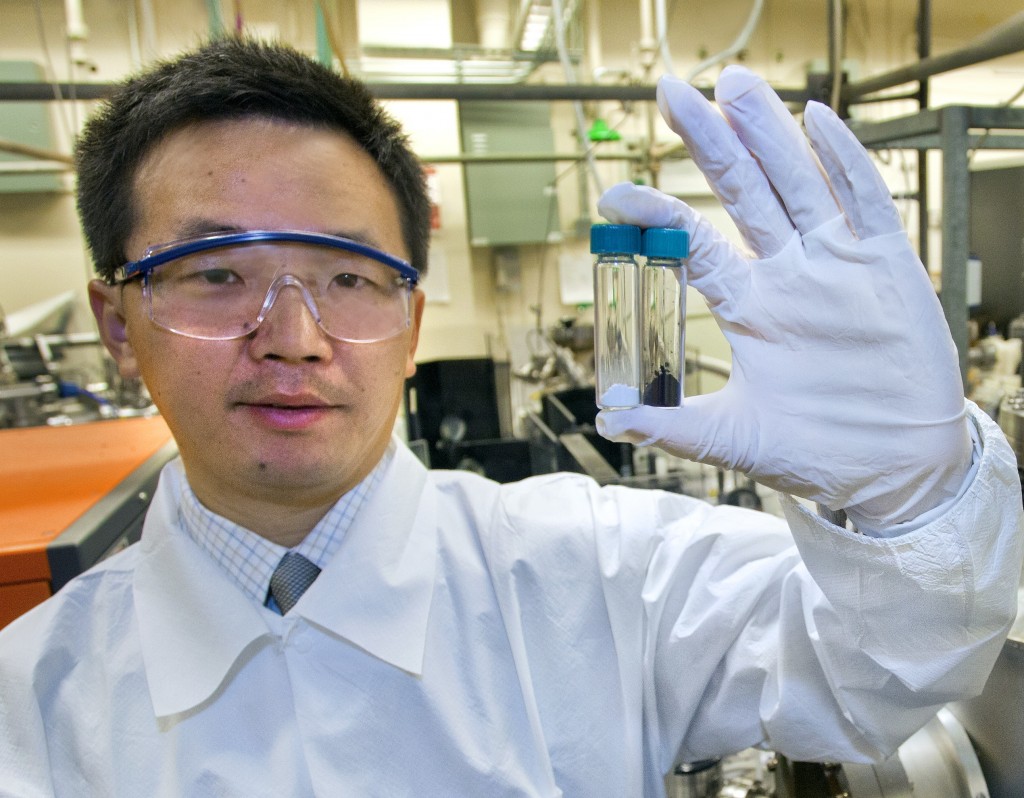Scientists from the US Department of Energy's National Laboratory have succeeded in changing the atomic structure of the surface layer of the titanium dioxide nanocrystals, thereby developing a more durable and efficient catalyst than all the other materials used today to harness solar energy for the production of hydrogen from water.

Their photocatalyst, which accelerates light-induced chemical reactions, is the first to possess both unprecedented stability and efficiency, properties that make it a leading candidate for use in a number of clean energy technologies.
The catalyst should provide a means for pollution-free production of hydrogen, the gas that could be used as an energy carrier in fuel cells. Today, fuel cells are considered a suitable alternative to combustion engines in vehicles. However, molecular hydrogen is found on Earth in only small concentrations and it is necessary to extract it from other sources such as natural gas or water - production that involves processes that consume large amounts of energy, and these processes constitute barriers to the widespread application of this technology.
"We are trying to find better ways to produce hydrogen from water using solar radiation," says Samuel Mao, a scientist in the Department of Environmental Energy Technologies at Berkeley Lab. "In this research, we were able to introduce disorder into the titanium dioxide nanocrystals, a property that improves its ability to absorb light radiation and its efficiency in producing hydrogen from water."
The researchers note that nanocrystals of titanium dioxide, which is a semi-conducting material, are used as photocatalysts to accelerate chemical reactions, such as utilizing energy from the sun to supply electrons that split the water into oxygen and hydrogen gases. Despite its stability, titanium dioxide is not very effective as a photocatalyst. Scientists have tried over the years to improve its effectiveness through the deliberate introduction of infections as well as through the introduction of other changes.
The researchers from Berkeley Lab used a new approach. In addition to the deliberate introduction of impurities, they were able to introduce disorder into the perfectly organized and ordered lattice structure of the surface layer of the titanium dioxide nanocrystals. This disorder was introduced through a process of hydrogenation (adding hydrogen atoms to the molecule).
The result obtained is the first nanocrystal ever to be intentionally disordered. One of the changes in the new material was easily observed: the titanium dioxide nanocrystals that were white in color turned black, a sign that the intentional disorder introduced into the material led to the absorption of radiation in the infrared range.
The researchers immersed the new nanocrystals in water and exposed them to sunlight. They found that twenty-four percent of the radiation absorbed by the photocatalysts was converted to hydrogen gas - a conversion rate about a hundred times greater than most semiconductor photocatalysts available today. In addition, the researchers found that the material does not break down during a trial period of 22 days - a result indicating that the material may be suitable for practical uses.
The unprecedented efficiency is largely due to the ability of the photocatalyst to absorb infrared radiation, an ability that makes the material the first ever photocatalyst of the titanium dioxide type capable of absorbing radiation at these wavelengths. The new material also absorbs visible light radiation and ultraviolet radiation. In contrast, most titanium dioxide type photocatalysts only absorb ultraviolet radiation and those containing structural defects may absorb visible light radiation. Ultraviolet radiation constitutes only about ten percent of the source of solar energy.
"The more energy that can be absorbed from the sun using a photocatalyst, the more electrons there will be that can be used for the chemical reaction - a characteristic that makes our black titanium dioxide an extremely important material," notes the researcher, a professor of engineering at the University of California, Berkeley.
Theoretical calculations conducted by the researchers showed that disorder, in the form of structural defects in the lattice and hydrogen atoms, allows photons absorbed from the outside to excite electrons which, in turn, are able to jump through a gap that is normally not possible in the original state. Once the electrons have passed this interval, they are able to provide the energy required for the chemical reaction by which water is broken down into oxygen and hydrogen. "Through the deliberate introduction of disorder of a very specific type, new electronic states are created, which enable a reduction in energy consumption for the entire process," explains the researcher. "This makes it possible to utilize the field of infrared radiation in sunlight for the benefit of improving the photocatalytic capacity of the material."
